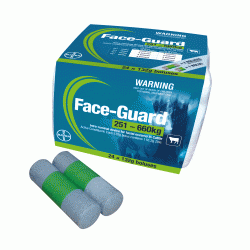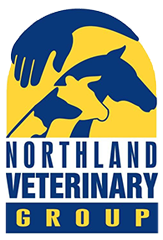Facial Eczema
What is Facial Eczema?
The fungus Pithomyces Chartarum grows in dead litter at the base of pasture. When grass temperatures are over 12 degrees C and humidity is high spores are produced (often Jan- May). The spores contain a toxin (sporidesim), which when ingested by cattle (or other pasture eating species, except horses) damages their liver and bile ducts. The liver is important for getting rid of waste products. When damaged, a breakdown product of chlorophyll (from green grass) builds up in the blood stream and results in the cow being highly sensitive to sunlight causing severe skin inflammation and damage.
Clinical signs you may see
- Lowered milk production (as little as 24 hours after ingesting the spores).
- Agitated, restless cows, licking their udders and seeking shade.
- Unpigmented skin that is exposed will thicken, become red and then peel.
Treatment
There is no cure for Facial Eczema once signs are seen. Keeping cows out of the sun and providing them with pain relief and water gives palliative treatment only. ALSO for every clinical case there will be 10 subclinical cases, where the liver has been damaged and milk production can be reduced by up to 50%. If the liver is too badly damaged it will not recover, the animal may show signs of chronic wasting or even die. This can happen at a later date, for example when the cow is under stress around calving.
Blood testing can determine if there is liver damage.
Prevention Is The Key!
Measuring spore counts
The number of fungal spores on pasture can be measured. Assure Quality publish regional spore counts online weekly:
- Monitor regional spore counts and when they trend up to 20,000 spores/g start monitoring your own paddocks.
- Pasture: Select 4 paddocks which are representative of your farm and sample the same paddocks once per week. When your spore counts on these paddocks trend up to 30,000 spores/g start full dose zinc dosing. (Sampling involves walking diagonally across the paddock and stopping to cut pasture at the base 10 times, to obtain approximately 200g of pasture, then bring this into the vet clinic.)
- Dung: Tells what the animals have actually been ingesting: Collect 1 tablespoon of dung from 10 different fresh cowpats from the yard or current paddock, into one container and drop off to the clinic for spore counting.
- Zinc dosing can be stopped when farm spore counts are consistently at 10,000 spores/g or less for 3 weeks and there are cooler temperatures.
Different preventative options
- Spraying your pastures with a fungicide: This is very convenient and either eliminates the need for zinc drenching or reduces it significantly. It can be costly, however, and the whole of the farm needs to be sprayed, also the paddocks need to be sprayed before they reach counts of 20,000 spores/g. Ongoing monitoring of spore counts and repeat applications are often required.
- Zinc sulphate water treatment (In line dispenser or PETA): this is cheap and convenient, however, treatment with a priming dose has to start 3-4 weeks before pasture spore counts start to rise with the in line dispenser, and 1 week early with the PETA dispenser. Also the dose is affected by water intake, and it requires daily labour to fill up the dispenser with zinc, plus no alternative water source must be available. While animals will not get a full protective dose by this method, if is vastly better than doing nothing!
- Zinc oxide drenching: This enables accurate dosing based on individual cow weight and can be started when spore counts on your farm trend up to 30,000 spores/g. It is cheap but very labour intensive, drenching cows daily, or a larger dose every 3 days. Dry stock can be drenched weekly.
- Slow release Zinc boluses: This can be started when counts trend up to 30,000 spores/g. It enables accurate dosing of animals as long as
 they are weighed and dosed accordingly. Each bolus lasts about 6 weeks (Face-Guard) or 1 month (Time Capsule) so if counts are still high after 6 or 4 weeks, depending on which you use, subsequent boluses will have to be administered. It is more expensive than daily zinc dosing.
they are weighed and dosed accordingly. Each bolus lasts about 6 weeks (Face-Guard) or 1 month (Time Capsule) so if counts are still high after 6 or 4 weeks, depending on which you use, subsequent boluses will have to be administered. It is more expensive than daily zinc dosing. - Zinc oxide in the feed: Zinc can either be added to a concentrate mix to be fed in the shed or on the feed pad. This can be convenient and cheap but involves daily administration/mixing (if not included by the feed company) and intake will depend upon individual cow intakes and wastage.
- Crisis dosing: Treating previously untreated animals during the danger period only with higher rates of zinc is less effective (about 60% vs 80-90% when used preventatively).
In addition to these preventative programmes try and avoid hard grazing during the danger periods, as this will increase spore intake and avoid topping of pastures as this will increase the buildup of soft litter.
Cow monitoring
For all but the fungicide and zinc bolus options it is recommended to blood test 10 representative animals 2-3 weeks into the program to check serum zinc levels. Also at 6 weeks to test for liver damage by measuring GGT levels.
Please contact us to discuss spore count testing and treatment options that might be best suited for your farm.

